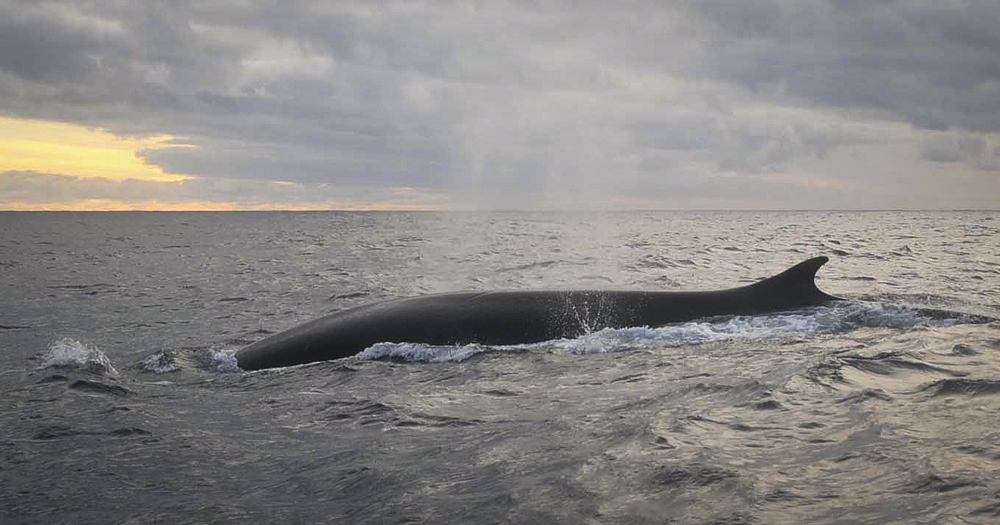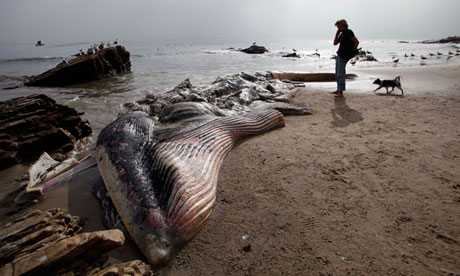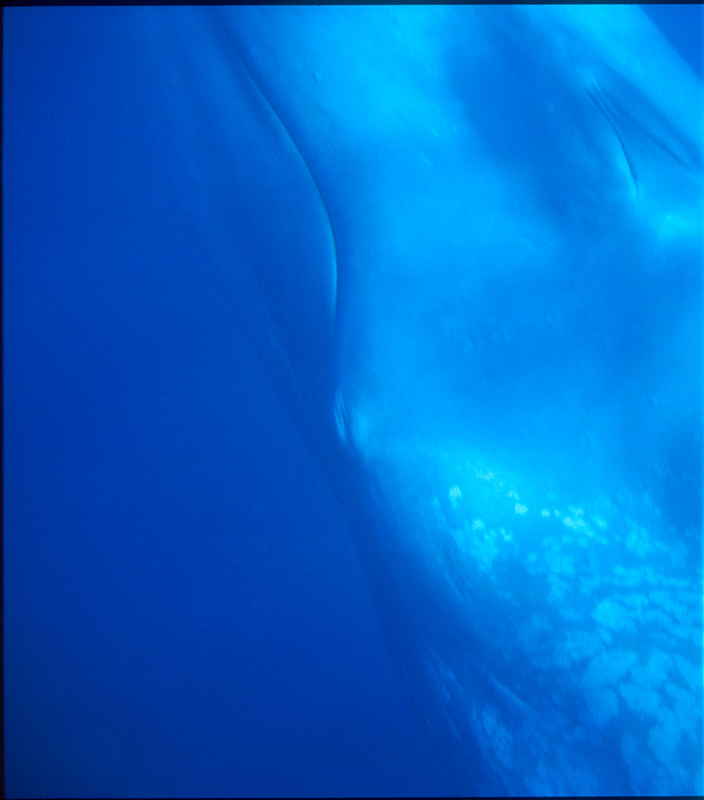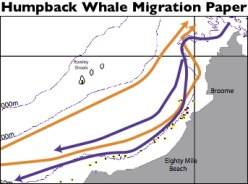
Fin Whale (Balaenoptera physalus) cruising through the Antarctic’s Ross Sea . Photo credit: Australian Antarctic Division.
Fin whales (Balaenoptera physalus) are a cosmopolitan rorqual whale, one of the eight or nine extant species of whale (there are 5 extinct species) recognised for their unique filter feeding mouth parts, their baleen plates. Most of these species are migratory, travelling huge distances between summer polar feeding regions and winter tropical breeding grounds.
Fin whale adults average 27 m in length, the second largest of the rorqual group, behind blue whales, and typical of the rorquals have long, streamlined bodies and a low, swept-back dorsal fin positioned about two-thirds of the way to the tail flukes. Upon surfacing, their blows are 4-8 m high, sometimes appearing vase-shaped. Fin whales have dark-grey to brownish pigmentation on the body with whitish coloration on the underside of the relatively small, triangular tail flukes. A uniquely diagnostic feature that is useful for field identification of this species is the white pigmentation present only on the lower right jaw. In fact asymmetrical pigmentation is unusual in most animals.
Fast swimmers, fin whales are among the quickest of the great whales but they also travel slowly just below or at the surface when socialising. Curt Jenner has had the privilege of driving an inflatable alongside a rapidly travelling pod of approximately 50 fin whales in the Antarctic’s Ross Sea – their large sleek and powerful bodies made him comment that they looked like whale versions of the Avatars!

guardian.co.uk
There was an interesting article published last Friday (7 December 2012) regarding a fin whale carcass that was washed up on a popular Malibu beach. Follow this link to read the story: Malibu tempers fray as fin whale carcass rots on beach near stars’ homes.

















No comments yet.